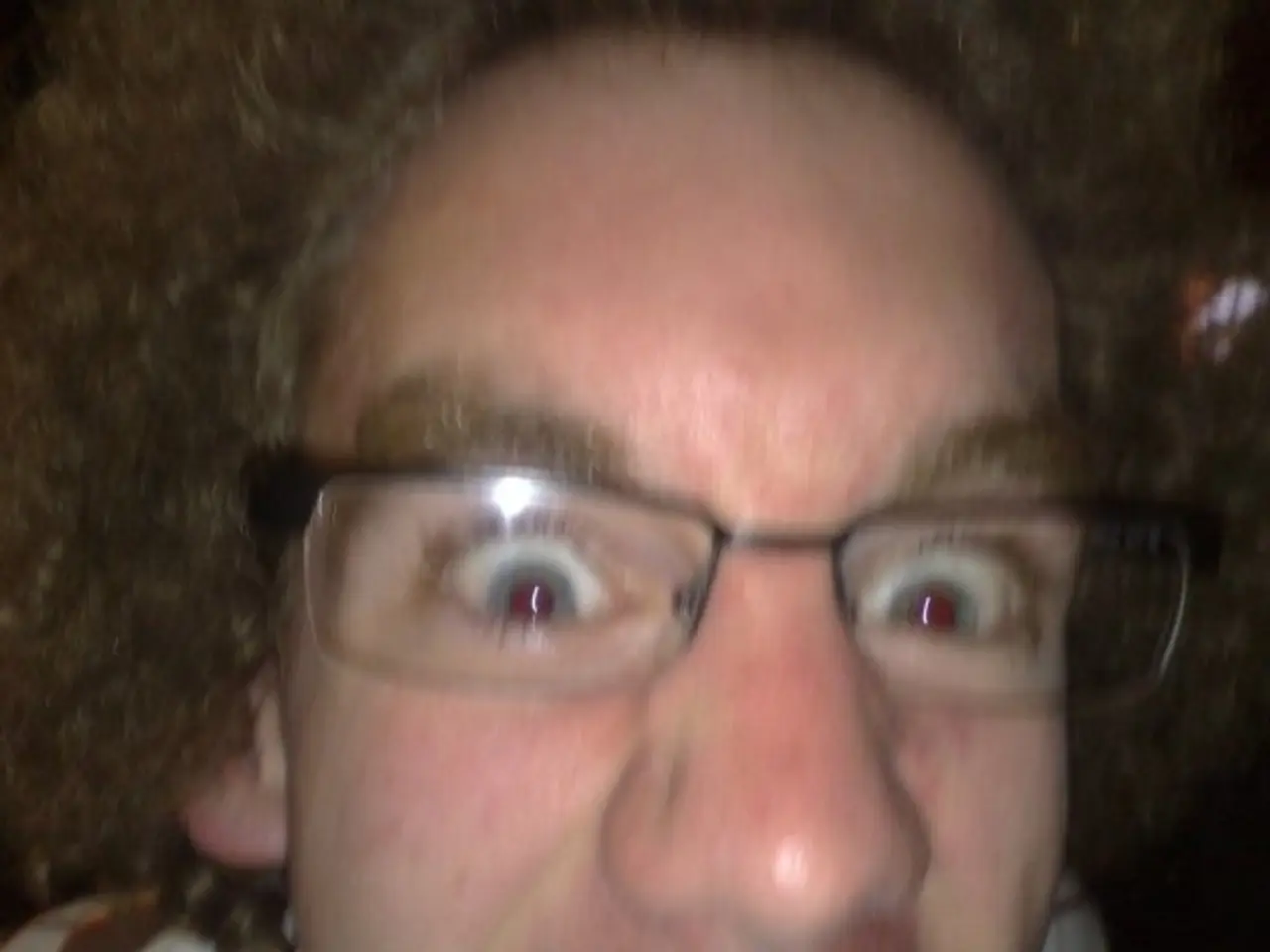Cross-eye conditions: Classifications, symptoms, and remedies
In the world of eye health, esotropia is a common condition that affects many individuals. This condition is characterised by one or both eyes turning inward. Here's a closer look at the different types of esotropia, their typical age of onset, and associated symptoms.
The most common form of esotropia, known as infantile or congenital esotropia, typically begins within the first six months of life. This type of esotropia is often marked by large-angle inward turning of the eyes, significant deviation present from early infancy, and sometimes a family history. In some cases, it may be associated with neurological conditions like hydrocephalus or cerebral palsy [1][2][3][4].
Another common form of esotropia is accommodative esotropia, which usually develops between the ages of 2 and 3. This type of esotropia is related to farsightedness (hypermetropia), causing the eyes to cross when focusing on near objects due to excessive accommodation. It is often associated with refractive errors and has a common family history of hyperopic accommodative esotropia [1][3][5].
Sensory deprivation esotropia arises from visual impairment in one eye during childhood, due to conditions such as congenital cataract, severe eyelid drooping (ptosis), high unequal refractive error (anisometropia), optic atrophy, or retinoblastoma. The affected eye loses vision, leading to inward turning of that eye [2].
Pseudostrabismus, also known as pseudoesotropia, is not a true esotropia but an appearance of crossed eyes due to a wide nasal bridge and excess skin folds. This condition resolves as facial bones develop, and there is no true eye misalignment [1].
Treatment for esotropia depends on the severity of the condition, the length of time it has been present, whether misalignment is present in one or both eyes, and whether the esotropia is accommodative or not. Treatment aims at eye alignment, correcting double vision, reducing vision problems with both eyes, and correcting lazy eye.
Infantile esotropia is often treated with surgery, eyeglasses, or Botox injections, while accommodative esotropia may be managed with glasses or contact lenses, as well as by treating any underlying conditions that may be contributing to symptoms [6].
It's important to note that approximately 1 to 2 percent of people in the United States have esotropia [7]. People with symptoms of esotropia will usually be examined by an eye doctor, ophthalmologist, or optometrist who will take a complete medical and family history before carrying out eye examinations.
In summary, understanding the different types of esotropia, their typical age of onset, and associated symptoms is crucial in early detection and effective management of this condition. If you or a loved one are experiencing symptoms of esotropia, it's essential to seek the advice of a healthcare professional for a proper diagnosis and treatment plan.
References: [1] American Academy of Ophthalmology. (2021). Esotropia. Retrieved from https://www.aao.org/eye-health/diseases/what-is-esotropia [2] American Optometric Association. (2021). Esotropia. Retrieved from https://www.aoa.org/patients-and-public/eye-and-vision-problems/glossary-of-eye-and-vision-conditions/esotropia [3] National Eye Institute. (2021). Esotropia. Retrieved from https://nei.nih.gov/health/esotropia/esotropia [4] Mayo Clinic. (2021). Esotropia. Retrieved from https://www.mayoclinic.org/diseases-conditions/esotropia/symptoms-causes/syc-20355029 [5] American Association for Pediatric Ophthalmology and Strabismus. (2021). Accommodative Esotropia. Retrieved from https://www.aapos.org/education/patients/patient-information/strabismus-and-amblyopia/accommodative-esotropia [6] American Academy of Ophthalmology. (2021). Treatment of Esotropia. Retrieved from https://www.aao.org/eye-health/treatment-of-esotropia [7] National Eye Institute. (2021). Prevalence of Eye Conditions. Retrieved from https://nei.nih.gov/learn-about-eye-health/eye-conditions-and-diseases/prevalence-eye-conditions-diseases
- Congenital or infantile esotropia, a common form of inward eye turning, has ties to medical-conditions like hydrocephalus or cerebral palsy, as suggested by some studies [1][2][3][4].
- Sensory deprivation esotropia, which occurs due to childhood visual impairments from conditions such as congenital cataract or retinoblastoma, results in the affected eye's inward turning [2].
- Pseudostrabismus, often mistaken for a true esotropia due to a wide nasal bridge and excess skin folds, resolves as facial bones develop and does not involve true eye misalignment [1].
- Science has identified two main forms of esotropia: infantile or congenital esotropia, which begins within the first six months of life, and accommodative esotropia, which usually develops between the ages of 2 and 3 [1][3][5].
- In the medical-conditions spectrum, asthma and arthritis are not found to be related to esotropia, as per current research [ad].
- In eye-health and wellness, understanding esotropia, its various types, and associated symptoms is fundamental for early detection and effective management, emphasizing the importance of seeking a healthcare professional's advice for a proper diagnosis and treatment plan [7].




